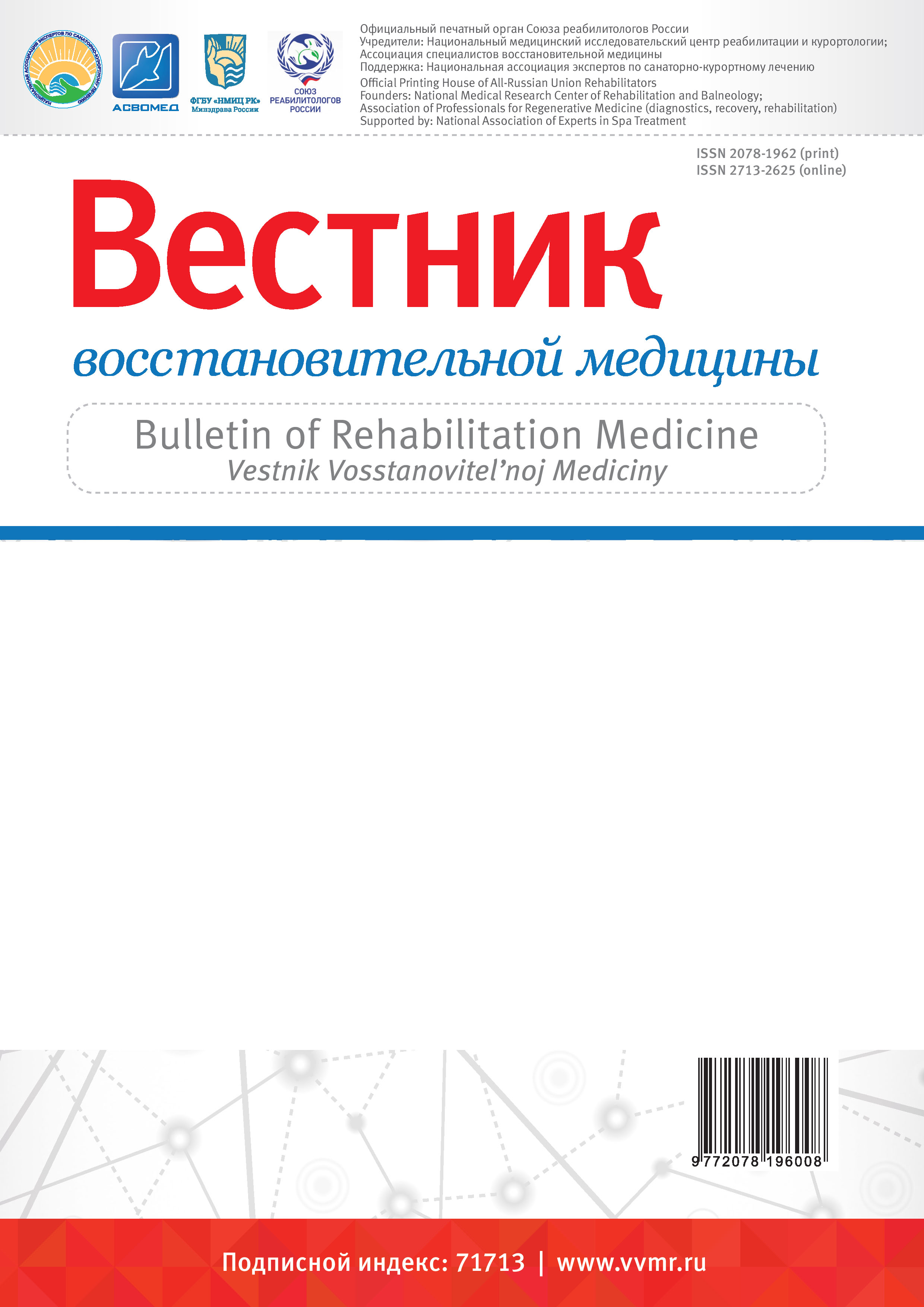Гипертония – частый диагноз у спортсменов силовых видов спорта. Цель. Оценить, как влияет повышение окислительных способностей мышц на кровяное давление у атлетов с артериальной гипертензией из силовых видов спорта, тяжелых весовых категорий. Материал и методы. Исследование проходило на базе кафедры спортивной медицины Российского государственного университета физической культуры, спорта, молодежи и туризма (РГУФКСМиТ), и длилось 180 дней. В исследовании приняли участие 65 представителей силовых видов спорта (тяжелая атлетика), тяжелых весовых категорий с артериальной гипертензией. Спортсмены были рандомизированы на две основные группы: группа HIIT (High Intensity Interval Training – интервальная тренировка высокой интенсивности, n=23), группа MICE (Moderate Intensity Continuous Exercise – равномерная тренировка средней интенсивности, n=22) и контрольную группу RT (Resistance Training – силовая тренировка, n=20). Для достижения поставленной цели исследования использовались следующие методы: эргоспирометрия, измерение уровня оксигенации мышечной ткани, измерение артериального давления и методы математической статистики. Спортсмены основных групп тренировались 180 дней (3 раза в неделю) на велоэргометре по высокоинтенсивному интервальному и равномерному протоколу, а участники контрольной группы тренировались 180 дней (3 раза в неделю) по своему традиционному силовому протоколу. Результаты. После 180 дней физической реабилитации у участников основных групп произошло повышение потребление кислорода на анаэробном пороге, снижение оксигенации мышц бедра и повышение максимального потребления кислорода, что привело к снижению систолического артериального давления в среднем на 11,1 мм рт.ст. и диастолического артериального давления на 11,2 мм рт.ст. в группах вмешательства. Заключение. Разработанные нами системы физической реабилитации атлетов силовых видов спорта позволяют эффективно и безопасно влиять на окислительные способности рабочих мышц и артериальное давление, однако времени затрачивается спортсменами на неспецифичную тренировочную деятельность в системе HIIT на 38% меньше.
артериальная гипертензия, физическая реабилитация, тяжелая атлетика, аэробная работа, интервальный метод, равномерный метод, спортивная медицина
1. Аронов Д.М., Иоселиани Д.Г., Бубнова М.Г., Красницкий В.Б., Гринштейн Ю.И., Гуляева С.Ф., Ефремушкин Г.Г., Лямина Н.П. Результаты российского рандомизированного контролируемого клинического исследования по оценке клинической эффективности комплексной годичной программы реабилитации с включением физических тренировок у трудоспособных больных, перенесших острый инфаркт миокарда на фоне артериальной гипертонии. Вестник восстановительной медицины. 2017; 5(81): 2-11.
2. Князева Т.А., Никифорова Т.И. Комплексные технологии реабилитации пациентов артериальной гипертензией с сопутствующей ишемической болезнью сердца. Вестник восстановительной медицины. 2019; 5(93): 25-29.
3. Correa-de-Araujo R., Harris-Love M.O., Miljkovic I., Fragala M.S., Anthony B.W., Manini T.M. The Need for Standardized Assessment of Muscle Quality in Skeletal Muscle Function Deficit and Other Aging-Related Muscle Dysfunctions: A Symposium Report. Frontiers in Physiology. 2017; (8): 87 p. https://doi.org/10.3389/fphys.2017.00087
4. Brown J.C., Harhay M.O., Harhay M.N. The muscle quality index and mortality among males and females. Annals of Epidemiology. 2016; 26(9): 648- 653. https://doi.org/10.1016/j.annepidem.2016.07.006
5. Naimo M.A., Varanoske A.N., Hughes J.M., Pasiakos S.M. Skeletal Muscle Quality: A Biomarker for Assessing Physical Performance Capabilities in Young Populations. Frontiers in Physiology. 2021; (12): 706699 P. https://doi.org/10.3389/fphys.2021.706699
6. Hawley J.A., Bishop D.J. High-intensity exercise training - too much of a good thing? Nature reviews. Nature Reviews Endocrinology. 2021; 17(7): 385-386. https://doi.org/10.1038/s41574-021-00500-6
7. Parry H.A., Roberts M.D., Kavazis A.N. Human Skeletal Muscle Mitochondrial Adaptations Following Resistance Exercise Training. International Journal of Sports Medicine. 2020; 41(6): 349-359. https://doi.org/10.1055/a-1121-7851
8. Ruple B.A., Godwin J.S., Mesquita P.H.C., Osburn S.C., Sexton C.L., Smith M.A., Ogletree J.C., Goodlett M.D., Edison J.L., Ferrando A.A., Fruge A.D., Kavazis A.N., Young K.C., Roberts M.D. Myofibril and Mitochondrial Area Changes in Type I and II Fibers Following 10 Weeks of Resistance Training in Previously Untrained Men. Frontiers in Physiology. 2021; (12): 728683 p. https://doi.org/10.3389/fphys.2021.728683
9. Nederveen J.P., Betz M.W., Snijders T., Parise G. The Importance of Muscle Capillarization for Optimizing Satellite Cell Plasticity. Exercise and Sport Sciences Reviews. 2021; 49(4): 284-290. https://doi.org/10.1249/JES.0000000000000270
10. van der Zwaard S., Brocherie F., Jaspers R.T. Under the Hood: Skeletal Muscle Determinants of Endurance Performance. Frontiers in Sports and Active Living. 2021; (3): 719434 p. https://doi.org/10.3389/fspor.2021.719434
11. Virani S.S., Alonso A., Aparicio H.J., Benjamin E.J., Bittencourt M.S., Callaway C.W., Carson A.P.., Chamberlain A.M., Cheng S., Delling F.N., Elkind M.S..V, Evenson K.R., Ferguson J.F., Gupta D.K., Khan S.S., Kissela B.M., Knutson K.L., Lee C.D., Lewis T.T., Liu J., Loop M.S., Lutsey P.L., Ma J., Mackey J., Martin S.S., Matchar D.B., Mussolino M.E., Navaneethan S.D., Perak A.M., Roth G.A., Samad Z., Satou G.M., Schroeder E.B., Shah S.H., Shay C.M., Stokes A., VanWagner L.B., Wang N.Y., Tsao C.W. American Heart Association Council on Epidemiology and Prevention Statistics Committee and Stroke Statistics Subcommittee. Heart Disease and Stroke Statistics-2021 Update: A Report from the American Heart Association. Circulation. 2021; 143(8): e254-e743. https://doi.org/10.1161/CIR.0000000000000950
12. Nowroozpoor A., Gutterman D., Safdar B. Is microvascular dysfunction a systemic disorder with common biomarkers found in the heart, brain, and kidneys? - A scoping review. Microvascular Research. 2021; (134): 104123 p. https://doi.org/10.1016/j.mvr.2020.104123
13. Ranadive S.M., Dillon G.A., Mascone S.E., Alexander L.M. Vascular Health Triad in Humans With Hypertension-Not the Usual Suspects. Frontiers in Physiology. 2021; (12): 746278 p. https://doi.org/10.3389/fphys.2021.746278
14. Hansen D., Abreu A., Ambrosetti M., Cornelissen V., Gevaert A., Kemps H., Laukkanen J.A., Pedretti R., Simonenko M., Wilhelm M., Davos C.H., Doehner W., Iliou M..C, Kränkel N., Völler H., Piepoli M. Exercise intensity assessment and prescription in cardiovascular rehabilitation and beyond: why and how: a position statement from the Secondary Prevention and Rehabilitation Section of the European Association of Preventive Cardiology. European Journal of Preventive Cardiology. 2022; 29(1): 230-245. https://doi.org/10.1093/eurjpc/zwab007
15. Taylor J.L., Bonikowske A.R., Olson T.P. Optimizing Outcomes in Cardiac Rehabilitation: The Importance of Exercise Intensity. Frontiers in Cardiovascular Medicine. 2021; (8): 734278 p. https://doi.org/10.3389/fcvm.2021.734278
16. Harriss D.J., MacSween A., Atkinson G. Ethical Standards in Sport and Exercise Science Research: 2020 Update. International Journal of Sports Medicine. 2019; 40(13): 813-817. https://doi.org/10.1055/a-1015-3123
17. Bian Z.X., Shang H.C. CONSORT 2010 statement: updated guidelines for reporting parallel group randomized trials. Annals of Internal Medicine. 2011; 154(4): 290-291. https://doi.org/10.7326/0003-4819-154-4-201102150-00016
18. Miranda-Fuentes C., Chirosa-Ríos L.J., Guisado-Requena I.M., Delgado-Floody P., Jerez-Mayorga D. Changes in Muscle Oxygen Saturation Measured Using Wireless Near-Infrared Spectroscopy in Resistance Training: A Systematic Review. International Journal of Environmental Research and Public Health. 2021; 18(8): 4293 p. https://doi.org/10.3390/ijerph18084293
19. Lagerwaard B., Janssen J.J.E., Cuijpers I., Keijer J., de Boer V.C.J, Nieuwenhuizen AG. Muscle mitochondrial capacity in high- and low-fitness females using near-infrared spectroscopy. Physiological Reports. 2021; 9(9): e14838 p. https://doi.org/10.14814/phy2.14838
20. Flockhart M., Nilsson L.C., Tais S., Ekblom B., Apró W., Larsen F.J. Excessive exercise training causes mitochondrial functional impairment and decreases glucose tolerance in healthy volunteers. Cell Metabolism. 2021; 33(5): 957-970.e6. https://doi.org/10.1016/j.cmet.2021.02.017
21. Skelly L.E., Gillen J.B., Frankish B.P., MacInnis M.J, Godkin F.E., Tarnopolsky M.A., Murphy R.M., Gibala MJ. Human skeletal muscle fiber type-specific responses to sprint interval and moderate-intensity continuous exercise: acute and training-induced changes. Journal of Applied Physiology. 2021; 130(4): 1001-1014. https://doi.org/10.1152/japplphysiol.00862.2020
22. Bacon A.P., Carter R.E., Ogle E.A.., Joyner MJ. VO2max trainability and high intensity interval training in humans: a meta-analysis. PloS One. 2013; 8(9): e73182 p. https://doi.org/10.1371/journal.pone.0073182
23. Milanović Z., Sporiš G., Weston M. Effectiveness of High-Intensity Interval Training (HIT) and Continuous Endurance Training for VO2max Improvements: A Systematic Review and Meta-Analysis of Controlled Trials. Sports Medicine. 2015; 45(10): 1469-1481. https://doi.org/10.1007/s40279-015-0365-0
24. Engel F.A., Ackermann A., Chtourou H., Sperlich B. High-Intensity Interval Training Performed by Young Athletes: A Systematic Review and Meta- Analysis. Frontiers in Physiology. 2018; (9): 1012 p. https://doi.org/10.3389/fphys.2018.01012
25. van Baak M.A., Pramono A., Battista F., Beaulieu K., Blundell J.E., Busetto L., Carraça E.V., Dicker D., Encantado J., Ermolao A., Farpour-Lambert N.., Woodward E, Bellicha A., Oppert J.M. Effect of different types of regular exercise on physical fitness in adults with overweight or obesity: Systematic review and meta-analyses. Obesity Reviews: An Official Journal of the International Association for the Study of Obesity. 2021; 22(S4): e13239 p. https://doi.org/10.1111/obr.13239
26. Hedman A., Reneland R., Lithell H.O. Alterations in skeletal muscle morphology in glucose-tolerant elderly hypertensive men: relationship to development of hypertension and heart rate. Journal of Hypertension. 2000; 18(5): 559-565. https://doi.org/10.1097/00004872-200018050-00008
27. Musci R.V., Hamilton K.L., Linden M.A. Exercise-Induced Mitohormesis for the Maintenance of Skeletal Muscle and Healthspan Extension. Sports. 2019; 7(7): 170 p. https://doi.org/10.3390/sports7070170
28. Memme J.M., Erlich A.T., Phukan G., Hood D.A. Exercise and mitochondrial health. The Journal of Physiology. 2019; 599(3): 803-817. https://doi.org/10.1113/JP278853
29. Eigendorf J., May M., Friedrich J.., Engeli S., Maassen N, Gros G., Meissner J.D. High Intensity High Volume Interval Training Improves Endurance Performance and Induces a Nearly Complete Slow-to-Fast Fiber Transformation on the mRNA Level. Frontiers in Physiology. 2018; (9): 601 p. https://doi.org/10.3389/fphys.2018.00601
30. Blood Pressure Lowering Treatment Trialists’ Collaboration. Pharmacological blood pressure lowering for primary and secondary prevention of cardiovascular disease across different levels of blood pressure: an individual participant-level data meta-analysis. The Lancet. 2021; 397(10285): 1625-1636. https://doi.org/10.1016/S0140-6736(21)00590-0
31. Stensvold D., Viken H., Steinshamn S.L., Dalen H., Støylen A., Loennechen J.P., Reitlo L.S., Zisko N., Bækkerud F.H., Tari A.R., Sandbakk S.B., Carlsen T., Ingebrigtsen J.E., Lydersen S., Mattsson E., Anderssen S.A., Fiatarone Singh M.A., Coombes J.S., Skogvoll E., Vatten L.J., Helbostad J.L., Rognmo Ø., Wisløff U. Effect of exercise training for five years on all cause mortality in older adults-the Generation 100 study: randomised controlled trial. BMJ. 2020; (371): m3485 p. https://doi.org/10.1136/bmj.m3485
32. Radaelli R., Taaffe D.R., Newton R.U., Galvão D.A., Lopez P. Exercise effects on muscle quality in older adults: a systematic review and meta-analysis. Scientific Reports. 2021; 11(1): 21085 p. https://doi.org/10.1038/s41598-021-00600-3






